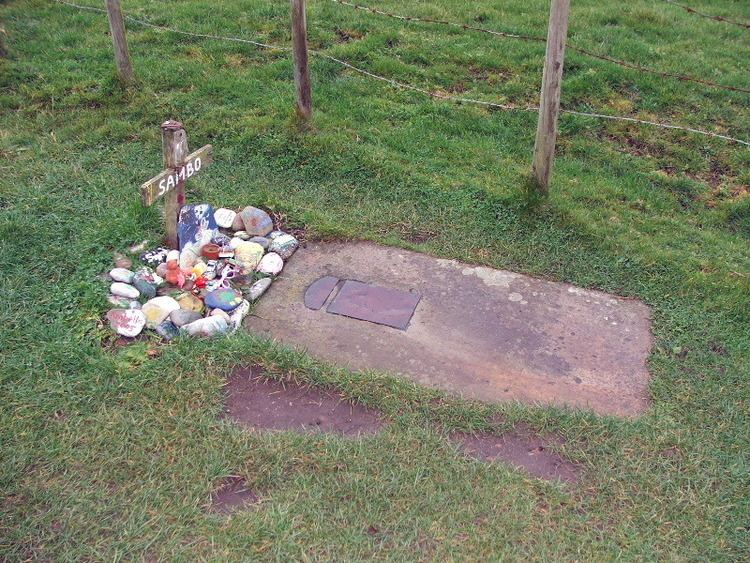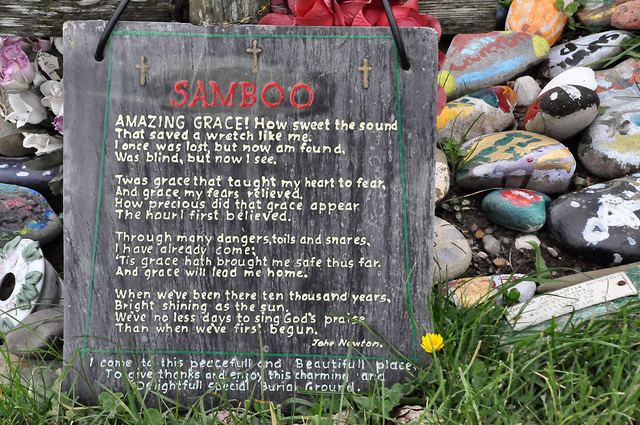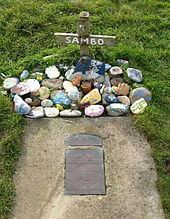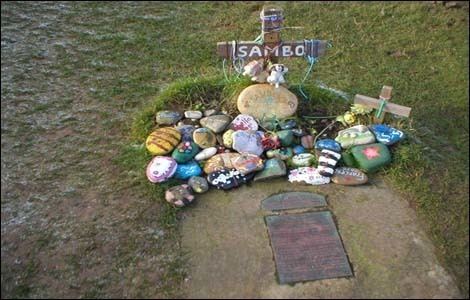 | ||
Sunderland point sambo s grave
Sambo's Grave is the burial site of a dark-skinned cabin boy or slave, on unconsecrated ground in a field near the small village of Sunderland Point, near Heysham and Overton, Lancashire, North West England. Sunderland Point was a port, serving cotton, sugar and slave ships from the West Indies and North America, which declined after Glasson Dock was opened in 1787. It is a very small community only accessible via a narrow road, which crosses a salt marsh and is cut off at high tide.
Contents
- Sunderland point sambo s grave
- Sambo s grave sunderland point near heysham lancashire
- History
- Plaque
- The site today
- References

Sambo s grave sunderland point near heysham lancashire
History

In the early 18th century Sunderland Point was a port for Lancaster, serving ships too large to sail up to the town. According to the Lonsdale Magazine of 1822, Sambo had arrived around 1736 from the West Indies as a servant to the captain of an unnamed ship:

After she had discharged her cargo, he was placed at the inn…with the intention of remaining there on board wages till the vessel was ready to sail; but supposing himself to be deserted by the master, without being able, probably from his ignorance of the language, to ascertain the cause, he fell into a complete state of stupefaction, even to such a degree that he secreted himself in the loft on the brewhouses and stretching himself out at full length on the bare boards refused all sustenance. He continued in this state only a few days, when death terminated the sufferings of poor Samboo. As soon as Samboo’s exit was known to the sailors who happened to be there, they excavated him in a grave in a lonely dell in a rabbit warren behind the village, within twenty yards of the sea shore, whither they conveyed his remains without either coffin or bier, being covered only with the clothes in which he died.—Lonsdale Magazine, 1822

It has also been suggested that Sambo may have died from a disease to which he had no natural immunity, contracted from contact with Europeans. He was buried in unconsecrated ground (as he was not a Christian) on the weatherbeaten shoreline of Morecambe Bay.
Plaque

With the opening of Glasson Dock in 1787, trade ships deserted Sunderland Point and it became a sea-bathing place and holiday venue. Sixty years after the burial, a retired headmaster of Lancaster boys' grammar school, James Watson, heard the story and raised money from summer visitors to the area for a memorial, to be placed on the unmarked grave. Watson, who was the brother of the prominent Lancaster slave trader, William Watson, also wrote the epitaph that now marks the grave (note the use of 'ſ', the Long s character, and the eccentric and inconsistent spelling typical of the time):
The site today

Today, official signposts on Sunderland Point define the grave and locality as a tourist attraction and the grave almost always bears flowers or stones painted by local children.
